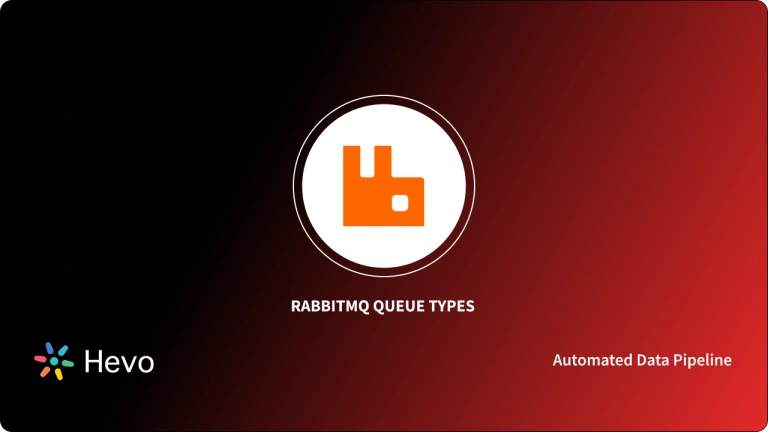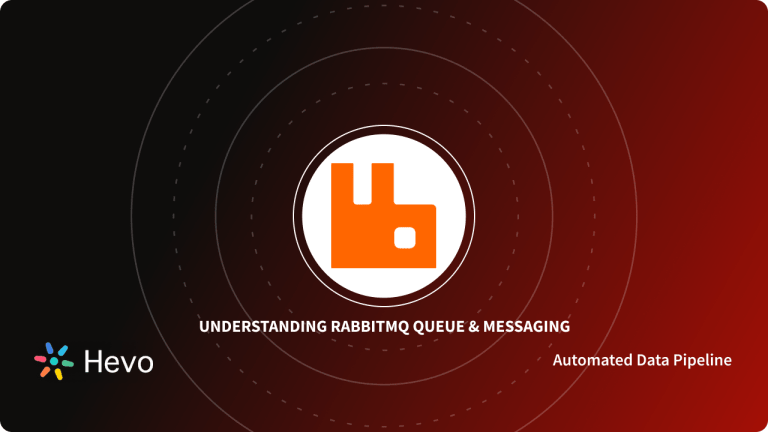Message queue (MQ) software, also popularly called message brokers, allows IT systems to communicate with each other about processes. There are certain rules that must be followed while sending messages across different platforms, which is why asynchronous protocols are provided by the queue, allowing senders and receivers to interact over long distances and at various times. It is important to understand how and why you want to use the message queue software. This article will discuss the different paid and Popular message brokers that are being used by top organizations!
Table of Contents
What are Message Broker Platforms?
Asynchronous communication between IT systems is possible with Message Queue platforms. Message queue software guarantees that software like APIs, operating systems, and other programs can communicate with one another effectively.
Messages can be of various forms like requests, responses, or alerts, depending on the sender. The queue promotes service-to-service interactions by storing, processing, and removing activities as they are finished. The program delivering a message does not have to access the message queue simultaneously as the receiver since message queue software is asynchronous.
The platforms have different types of message queues, namely:
- Workstation message queue
- User profile message queue
- Job message queue
- System operator message queue
- History log message queue.
IT workers, system administrators, and software developers are the most common users of Message Queue tools. Message queue software is used by businesses to coordinate remote applications, simplify building applications, boost performance, and automate communication-related operations. Message Queue solutions include a buffer that allows users on different systems to send messages to be temporarily stored until action is taken. The top message brokers platforms in the “Message Queue” category are Kafka, RabbitMQ, Azure Queue Storage, and ActiveMQ.
Implementing a high-quality Data Pipeline solution can be a cumbersome task if you just have a Data Warehouse and raw data. Hevo’s automated, No-code platform empowers you with everything you need for a smooth data pipeline experience. Our platform has the following in store for you!
Check out what makes Hevo amazing:
- Fully Managed: It requires no management and maintenance as Hevo is a fully automated platform.
- Data Transformation: It provides a simple interface to perfect, modify, and enrich the data you want to transfer.
- Real-Time: Hevo offers real-time data migration. So, your data is always ready for analysis.
- Schema Management: Hevo can automatically detect the schema of the incoming data and map it to the destination schema.
- Live Support: The Hevo team is available round the clock to extend exceptional support to its customers through chat, email, and support calls.
Hevo has been rated 4.7/5 on Capterra. Know more about our 2000+ customers and give us a try.
Sign up here for a 14-day free trial!Popular Message Broker Platforms
RabbitMQ
RabbitMQ is one of the best message broker, with tens of thousands of users. It is a lightweight messaging system that can be deployed on-premises or in the cloud. Besides, it may be deployed in distributed and federated configurations to meet high-scale, high-availability requirements. It supports powerful developer platforms and numerous message protocols and can be implemented in distributed and federated structures to meet high-availability needs.
RabbitMQ’s popular message broker platform supports a broad range of OS systems, cloud platforms, and a comprehensive set of developer tools for the most common programming languages like Java, .NET, PHP, Python, JavaScript, Ruby, Go, and more. You can also deploy RabbitMQ with BOSH, Chef, Docker, and Puppet and develop several cross-language messaging with these programming languages.
RabbitMQ which is a popular message broker there are a diverse set of tools and plugins to support Continuous integration, operational metrics, and interaction with other corporate systems.
If you want to manage and monitor RabbitMQ, you can use HTTP-API, a command-line tool, and UI.
RabbitMQ is a free and open-source message queuing system; only the Commercial releases are available for a subscription fee. these features make it a popular message broker.
IBM MQ
IBM MQ is a popular message brokers platform that can carry any form of data and messages, allowing organizations to create reusable architecture like service-oriented architecture (SOA). This popular message broker works with a wide range of computer systems, applications, online services, and communications protocols for secure message delivery. IBM MQ is a communications layer that allows you to see and control the flow of messages and data both inside and outside your company.
IBM MQ can be used in three operations, namely:
- point-to-point
- publish/subscribe
- File transfer
In the point-to-point operation, applications send messages to a queue or a set of queues. The sender must know the destination’s name but not its location.
Whereas in the publish/subscribe operation, applications send out a message on a certain subject, such as the result of a football match. Applications that subscribe to the results subject receive copies of the message from IBM MQ. They get an SMS containing the results of the game. The publisher is unaware of the identities of subscribers or their whereabouts.
As the name suggests, file transfer sends across files in the form of messages. File transfers are managed by IBM MQ Managed File Transfer, allowing administrators to set up automatic transfers and track the outcomes. The file transmission may be integrated with other file transfer systems, for example, IBM MQ messaging and the web.
For development, you can download the IBM MQ Advanced for free.
Apache Kafka
Kafka is a popular message broker that offers higher throughput, built-in partitioning, replication, and fault tolerance than other messaging queue systems, making it an excellent choice for large-scale message processing applications.
Kafka is a popular message broker that uses distributed system that communicates between servers and clients using the high-performance TCP network protocol. In both on-premise and cloud environments, it can run on bare metal, virtual machines, and containers.
As an alternative for a more typical message broker, Kafka works well. Popular Message broker are employed for several purposes, for example, to decouple processing from data producers, buffer unprocessed messages, and much more.
The primary benefit of Kafka is that it uses a cluster of servers to transmit messages at a network-limited throughput with latencies as low as 2ms. You can also safely store data streams in a distributed, persistent, and fault-tolerant cluster. Kafka is a popular message broker that is used by thousands of companies, ranging from internet giants to automobile manufacturers and stock exchanges.
Kafka transfers all data to a disc, implying that all writes go to the operating system’s page cache. Moving data from a page cache to a network socket makes it more efficient.
Because Apache Kafka is an open-source technology, the hosting service determines the price. Businesses budget at least $0.42 per hour, and the price increases as the message requirements grow. This pricing and features make it a popular message broker.
Amazon SQS
Amazon SQS (Simple Queue Service) is a popular message broker for decoupling and scale microservices, distributed systems, and serverless applications. SQS simplifies and reduces the cost of administering and operating message-oriented middleware, allowing developers to focus on their core competencies. You may transmit, store, and receive messages across software components using SQS at any volume without losing messages or demanding the availability of other services. Using the AWS Management Console, you can get started with SQS in minutes.
SQS provides two types of message queues, namely:
- Standard queues
- SQS FIFO
You may use Amazon SQS which is a popular message broker to send sensitive data between apps by encrypting each message body using server-side encryption (SSE). The integration of Amazon SQS SSE with AWS Key Management Service (KMS) lets you manage the keys that safeguard SQS messages and keys that protect your other AWS resources from a single location. To help you fulfill your legal and compliance requirements, AWS KMS records every usage of your encryption keys to AWS CloudTrail.
All continuous operations and underlying infrastructure required to deliver a highly reliable and scalable message queuing service are managed by Amazon Web Services (AWS) on the cloud. SQS queues are dynamically produced and scale automatically, allowing you to construct reliable applications efficiently.
For the first 1 Million Requests/Month, you may use Amazon SQS for free. For 1 Million to 100 Billion Requests/Month, it can cost $0.40 for Standard Queues and $0.50 for FIFO Queues. this pricing and features makes it a popular message broker.
Red Hat AMQ
Red Hat® AMQ is a popular message broker that also acts as a versatile messaging platform that distributes information consistently, enabling real-time integration and connecting the Internet of Things. It is built on open-source communities like Apache ActiveMQ and Apache Kafka.
Red Hat AMQ is a popular message broker that combines applications, endpoints, and devices quickly and effectively, using multiple message patterns to allow real-time messaging. As a consequence, your company is more flexible and responsive.
You may also share high throughput and low latency data across microservices and other apps. Using strong operators, the AMQ streams component makes Apache Kafka “OpenShift native,” simplifying the deployment, configuration, maintenance, and usage of Apache Kafka on OpenShift.
Red Hat AMQ is a popular message broker that has a proven record of supporting mission-critical applications, backed by Red Hat’s award-winning support and services. This communications platform is built on Apache Software Foundation’s open-source projects with a long track record and a thriving community of contributors.
You can download the AMQ Streams Free Evaluation for 90 days, after which you can buy the Red Hat Integration Essential for USD 5,940 per SKU annually. You can also buy the Red Hat Integration Standard, USD 43,200 per SKU per annum. These features and pricing make it a very popular Popular message broker.
Google Cloud Pub/Sub
Services can interact asynchronously using Google Pub/Sub which is a popular message broker, with latencies on the order of 100 milliseconds. In order to ingest and disseminate data, Google Pub/Sub is utilized in streaming and data integration pipelines. It works well as a messaging-oriented middleware for service integration as well as a queue for job parallelization.
You may use Google Pub/Sub to establish systems of event producers and consumers, which are referred to as publishers and subscribers. Instead of synchronous remote procedure calls, publishers connect with subscribers asynchronously by disseminating events (RPCs).
Publishers send events to the Google Pub/Sub service without regard to how or when these events are to be processed. Google Pub/Sub then delivers events to all services that need to react to them. Compared to systems communicating through RPCs, where publishers must wait for subscribers to receive the data, such asynchronous integration increases the flexibility and robustness of the overall system.
Conclusion
It is up to you which popular message broker best suits your needs. While some message queue software is included as part of an extensive application, other message queue software establishes a communication network across many applications, often spanning operating systems(OS). Message queue software, in any scenario, records messaging activity in the event of a system breakdown.
There are various trusted sources that companies use as they provide many benefits, but, transferring data from it into a data warehouse is a hectic task. The automated data pipeline helps solve this issue, and this is where Hevo comes into the picture. Hevo Data is a No-code Data Pipeline and has awesome 150+ pre-built Integrations that you can choose from.
Connect with us today to improve your data management experience and achieve more with your data.
FAQs
1. What is the most popular message broker?
Apache Kafka is considered one of the most popular message brokers due to its scalability, fault tolerance, and high-throughput capabilities.
2. What is the most popular JMS?
Apache ActiveMQ is one of the most widely used Java Message Service (JMS) providers, offering message queuing and publishing services.
3. What is an example of a message broker?
RabbitMQ is a well-known example of a message broker that is widely used for managing and routing messages between applications.




